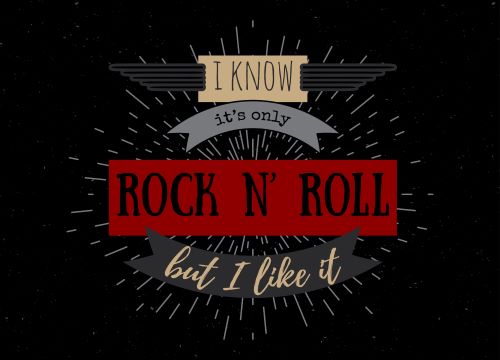Rock ‘n’ roll, a genre that has come to define rebellion, energy, and a revolutionary spirit, has a rich and intricate history!
While many associate rock ‘n’ roll with the 1950s and the rise of iconic figures like Elvis Presley, Chuck Berry, and Little Richard, the true origins of this electrifying genre can be traced back even further, to a diverse range of influences that may surprise many. From blues and gospel to swing and country, the evolution of rock ‘n’ roll was shaped by a dynamic interplay of musical genres, cultures, and societal changes.
Blues and Rhythm: The Soul of Rock ‘n’ Roll
One of the most significant early influences on rock ‘n’ roll was the blues. Emerging from the African-American communities in the Southern United States, the blues brought forth raw emotion, heartfelt lyrics, and a distinctive use of the guitar. Musicians like Robert Johnson and Muddy Waters laid the foundation for what would become the characteristic sound of rock ‘n’ roll. The driving rhythm and soulful vocals of the blues were seamlessly integrated into the genre, forming a bridge between African musical traditions and the emerging rock movement.
Gospel and the Power of Expression
Another surprising influence on the origins of rock ‘n’ roll came from gospel music. Gospel, with its emotive vocal performances and spiritual fervor, played a crucial role in shaping the vocal style and stage presence of early rock ‘n’ roll artists. The energy, call-and-response patterns, and the way gospel music connected with audiences had a lasting impact on the way rock ‘n’ roll artists engaged with their fans and performed on stage. Figures like Sister Rosetta Tharpe, often referred to as the “Godmother of Rock ‘n’ Roll,” effortlessly blended gospel, blues, and rock elements to create a dynamic and genre-defying sound.
Swing and the Birth of the Boogie-Woogie Beat
The vibrant swing era of the 1930s and 1940s also played an unexpected role in shaping the DNA of rock ‘n’ roll. The rhythmic complexity and infectious dance beats of swing music contributed to the development of the boogie-woogie rhythm, a cornerstone of rock ‘n’ roll. This rhythm, characterized by its upbeat tempo and syncopated patterns, brought a sense of vitality and danceability that would become synonymous with rock ‘n’ roll’s energetic spirit. Artists like Louis Jordan and Big Joe Turner seamlessly fused elements of swing and rhythm and blues, laying the groundwork for the rock ‘n’ roll revolution.
Country Roots and Cross-Cultural Fusion
Country music, often seen as a distinct genre, also played a pivotal role in the early evolution of rock ‘n’ roll. The twang of the guitar, heartfelt storytelling, and a strong emphasis on vocal expression found common ground with the blues and rhythm and blues. Pioneers like Hank Williams and Bill Monroe incorporated elements of country into their music, influencing early rock ‘n’ roll artists who sought to blend genres and create a unique sound that resonated with a wide audience.
The origins of rock ‘n’ roll are a testament to the power of cultural exchange, creative innovation, and the transformative nature of music. The genre’s roots in blues, gospel, swing, and country highlight the interconnectedness of musical traditions and the ability of artists to draw inspiration from a diverse array of sources. As rock ‘n’ roll continues to evolve and captivate audiences worldwide, it’s essential to recognize and celebrate the surprising early influences that helped shape this iconic and revolutionary genre.
#RockNRollOrigins #MusicHistory #EarlyInfluences #Blues #Gospel #Swing #Country #MusicalEvolution #CulturalExchange #GenreFusion #RockNRollPioneers

























